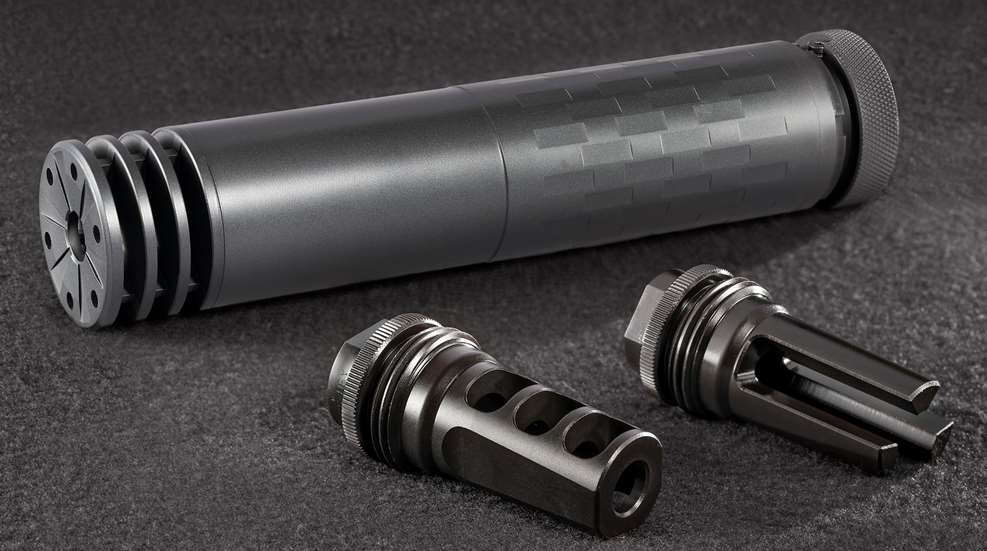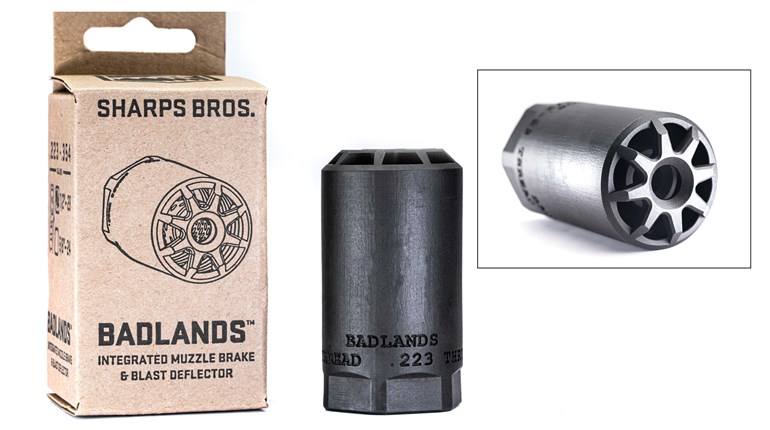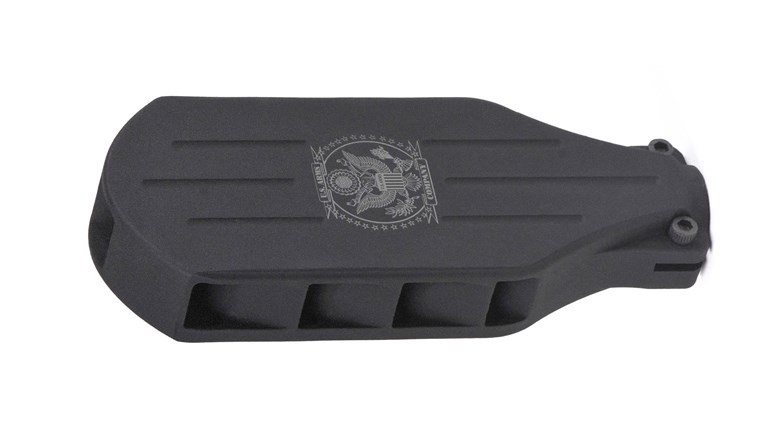
Choosing between a flash hider and a muzzle brake for your quick-detach suppressor mount depends on numerous factors.
Some of the most interesting topics with which I wrestle come to me in the form of excellent questions from fellow riflemen and women. When one of those questions comes up repeatedly, I know that it’s time to give it more than passing attention. So it is with a new spin on the muzzle-brake-versus-flash-hider debate. Specifically, which one is better to use on a rifle that will be suppressed most or all of the time? The “better” part of that question can be further broken down to determine which device is more durable and which provides better sound and flash performance in conjunction with a sound suppressor.
Whenever this question has come up, I’ve done my best to base answers on my own experience as a shooter and weapons developer/tester in the military. My quick answer is that a muzzle brake is generally going to be stronger, based purely on the theory that more metal is more betterer. As far as performance goes, I’ve never noticed any flash differences between the two types of muzzle devices when a suppressor is mounted. Since much of my hearing was taken by a series of rapid blasts 20 years ago, I cannot answer the sound suppression part of the question. Because my explanations have been limited to the non-technical “Grunt-speak” realm, I reached out to SureFire’s Suppressor Division for any clarifications and course corrections it could apply to my boiler-plate answers.
According to SureFire, when a suppressor is mounted most or all of the time, muzzle brakes do tend to be more durable than flash hiders due to the former’s thicker structures. The company explained that baffled muzzle-brake designs, such as its own SOCOM series brakes, also provide a sacrificial baffle that gasses, heat and particles hit before going into the sound suppressor and encountering the blast baffle. However, SureFire points out that its suppressors’ blast baffles are very thick and made of Inconel, whereas muzzle brakes are typically made of stainless steel. Therefore, the blast baffle should be far stronger than the brake (or flash hider) and nearly impossible to wear out through normal use.
Concerning flash hiders, SureFire’s Suppressor Division points out that the thickness of its open-tine flash suppressors makes them very durable when subjected to the heat, pressure and erosion that accompany firing with a suppressor mounted. While brakes tend to be stronger than flash hiders, SureFire points out that the heavy use required to cause flash-hider failure will also wear out the barrel and other critical components in the process. Closed-tine flash hiders are less durable than open-tine models due to the front portion (connecting the flutes) being fairly thin in comparison to the thicker tines of an open flash hider. The closed end catches more blast erosion, whereas an open-tine design allows the blast and erosion to pass through and into the sound suppressor. SureFire adds that select military customers use extremely durable QD muzzle devices that are made of Inconel, but because they cost four to five times as much as stainless steel, such brakes and flash hiders aren’t practical for the commercial market.
Does A Muzzle Brake Or Flash Hider Work As A Suppressor Mount?
When considering how muzzle brakes compare to flash hiders in terms of suppressed performance, the script flips slightly. SureFire’s reps tell me that muzzle brakes tend to direct more blast into the rear of the suppressor, causing carbon to build up on the device’s mounting surface more quickly than when a flash hider is used. I can certainly attest that this additional buildup is noticeable and requires more frequent cleaning of the brake’s mounting surfaces to ensure proper suppressor attachment. Sound-wise, SureFire states that it’s basically a toss-up between the two muzzle devices when a suppressor is mounted. Likewise, the visible flash outside of the suppressor is not significantly different from one device to the other.
Anyone who has tried both an oversize suppressor and a bore-specific model on the same gun, such as .22- and .30-caliber centerfire suppressors on a 5.56 mm rifle, has likely noticed that the smaller suppressor bore provides better sound and flash reduction. SureFire verifies that this observation is not imaginary. However, the company adds that a larger suppressor-bore size outperforms a tight one in the accuracy realm, especially on large-caliber rifles. Another useful nugget passed on by SureFire is that over-bore suppressors remain cooler, which reduces wear, when compared with tighter bore sizes. That may be useful when planning for shorter barrels or high-volume firing.
Eighteen years ago, as I transitioned from one who used suppressed sniper and close-combat rifles to a tester and developer of new weapon systems, QD suppressor-muzzle-device failures were something we lived with. Under heavy use, those earlier flash hiders’ thin tines could melt and/or weld to the inside of their suppressors in a single, heavy shooting session. Both items would be ruined in the process. Long before such damage occurs, a failing suppressor mount will take a suppressor out of proper bore alignment, risking baffle and endcap strikes as well as other unpleasant results. Today’s QD muzzle devices, suppressor internal designs and materials are far superior to what was considered standard fare just a few years ago, making mounting-surface failures far less common.
Because I’m drawing mainly upon input from SureFire’s Suppressor Division, the “actual results may vary” caveat applies here. While some makers’ internal test results may differ from SureFire’s, I feel comfortable applying the basic principles of suppressed flash-hider and muzzle-brake performance to similar designs from other companies. There are additional considerations as well. For instance, the reduction or elimination of back pressure is a key design consideration for the newest suppressors. Also, there’s evidence that muzzle-brake and flash-hider designs affect rifle-operating pressures differently when suppressed. Unfortunately, I’ve pestered my suppressor-industry friends enough for now, so that discussion will have to wait for another time.





































